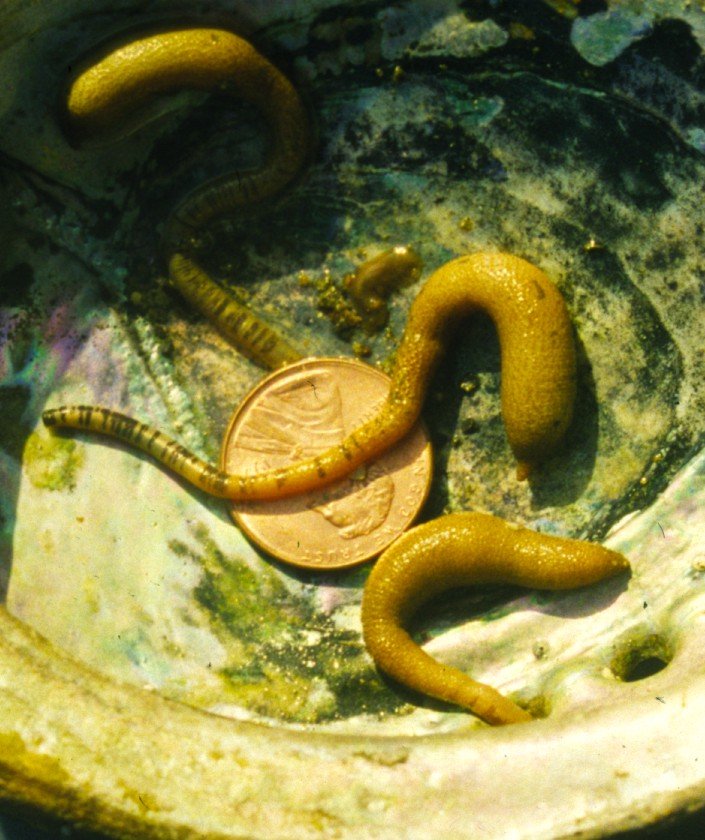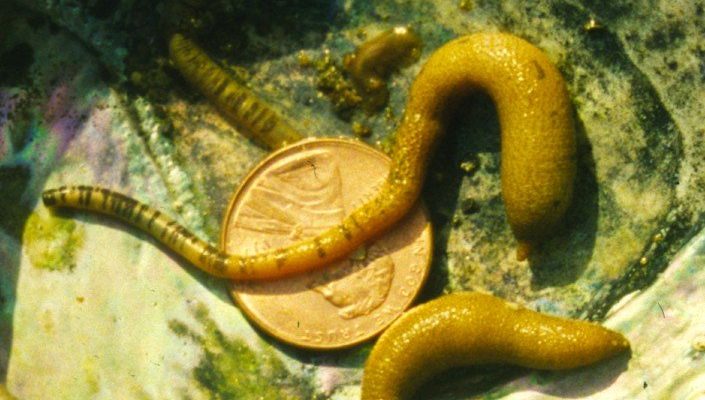
Imagine trying to enjoy a peaceful picnic, only to be interrupted by pesky ants or wasps. That’s sort of what peanut worms face in their environment—they have enemies that want to take them out. These little worms are often caught in the middle of nature’s food web, where predators see them as a tasty meal. Beyond predators, things like climate change and habitat destruction add to the struggles of peanut worm populations, making their lives even tougher. Let’s take a closer look at who’s after these worms and what environmental threats they’re up against.
What Are Peanut Worms?
Peanut worms, or *Cryptolestes spp.*, are larvae that primarily consume the roots of peanut plants. These little guys are generally pale yellow or green and can grow up to 2 inches long. They’re so small, you might not notice them until it’s too late and they’ve started damaging your crops.
You might be wondering how these worms get their name. Well, they love to munch on peanuts, which makes them a big concern for farmers who grow these crops. Their feeding habits can lead to reduced yields, which is a nightmare scenario for anyone relying on peanuts for income.
Understanding the peanut worm is crucial for managing them. If we know what they are and how they live, we can better address their threats and find effective ways to manage their populations.
Natural Predators of Peanut Worms
Peanut worms have a few natural predators that keep their populations in check. These include birds, wasps, and various types of beetles. Just like how you might rely on friends to back you up in a tough situation, these predators play a crucial role in maintaining balance in the ecosystem.
- Birds: Certain songbirds and larger birds of prey will feast on peanut worms when they find them.
- Wasp species: Some wasps lay their eggs in or on peanut worms, which means the larvae will eventually hatch and consume them from the inside out!
- Beetles: Ground beetles and others also target these worms, making them a major predator in the dirt.
While having predators keeps the peanut worm numbers down, it’s not a perfect solution. If environmental conditions favor the predators, they can wipe out entire populations of peanut worms. It’s a delicate balance.
Impact of Pesticides on Peanut Worm Predators
You might think that using pesticides is a sure way to solve the peanut worm problem, but there’s a catch. Pesticides don’t just harm the worms; they also kill off the natural enemies that help control their populations.
When farmers spray pesticides, they often end up killing beneficial insects, including those predators we just talked about. This can lead to a spike in peanut worm populations since there are fewer predators to keep them in check. It’s like inadvertently taking away the lifeguards at a pool—without them, things can get out of hand quickly!
Moreover, pesticides can have long-lasting effects on the soil and surrounding ecosystems. It’s crucial to find a balance that allows farmers to protect their crops without disrupting the entire food chain.
Climate Change and its Effects on Peanut Worms
Climate change isn’t just a buzzword; it has real implications for peanut worms and their survival. Changes in temperature and rainfall can alter their habitats drastically. Imagine how you’d feel moving from a comfortable house to a tiny, uncomfortable room—this is what peanut worms might experience.
For instance, if temperatures rise, peanut worms could thrive in higher numbers, leading to an increase in crop damage. Additionally, erratic weather patterns can make it harder for their predators to survive, which only adds to the problem. Many habitats are becoming inhospitable for these predators, meaning their populations may decline just when peanut worm numbers are climbing.
It’s a bit of a domino effect; as one species thrives, another falters. This delicate balance is what makes understanding peanut worm populations so essential.
Habitat Destruction and Its Consequences
Habitat destruction is another significant threat facing peanut worms. As agricultural land expands and natural areas disappear, these worms lose the places they need to live and reproduce. Losing this habitat is like having your favorite coffee shop close down—where else will you go?
When farms use practices like monoculture (growing the same crop over and over), they can further reduce the natural enemies of peanut worms. This lack of biodiversity means fewer predators can help keep the peanut worm populations in check.
To help manage their populations, it’s essential to create a balanced environment where peanut worms can coexist with their predators. Using sustainable farming methods can support this balance and help maintain healthy ecosystems.
Integrated Pest Management (IPM) Strategies
So, how can farmers manage peanut worm populations without causing more problems? That’s where Integrated Pest Management (IPM) comes in. This method focuses on combining different strategies to control pests like peanut worms while minimizing negative effects on the environment.
Here are some key components of IPM:
- Monitoring: Regularly checking crops for peanut worms can help catch infestations early.
- Biological control: Using natural predators, like the wasps and beetles we previously mentioned, can provide a sustainable way to manage worm populations.
- Cultural practices: Rotating crops and planting resistant varieties can reduce the prevalence of peanut worms.
IPM isn’t just about removing pests; it’s about creating a balanced ecosystem. When farmers adopt these techniques, they can help peanut worms coexist with their natural enemies, reducing the need for harmful pesticides.
The Future of Peanut Worm Populations
Looking ahead, the future of peanut worm populations depends on how we address both their natural predators and the environmental threats they face. It’s a complex web of interactions that requires thoughtful solutions.
As climate change continues to impact ecosystems, finding innovative approaches to farming and pest management will be vital. Advocating for more sustainable practices not only benefits the environment but also helps farmers maintain healthy peanut crops.
The bottom line? It’s all about balance. By understanding the challenges peanut worms face, we can help ensure that both they and their predators can thrive in harmony.
In conclusion, recognizing the role of predators and environmental threats to peanut worm populations is key to managing these pests effectively. With careful strategies and awareness, we can create a future where peanut crops flourish alongside their worm inhabitants.

